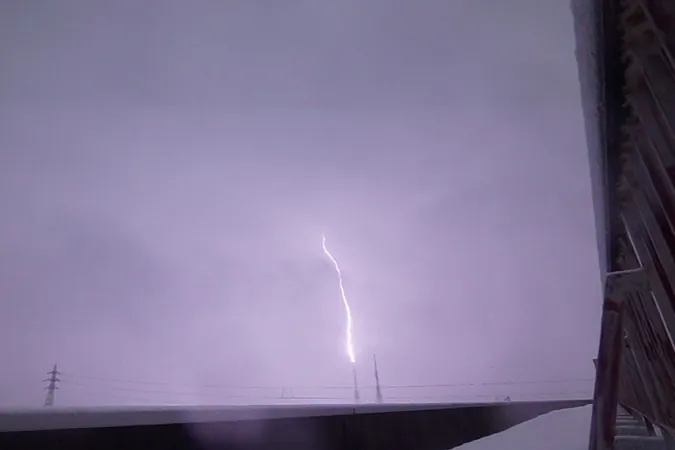
Lightning Caught Unleashing a Stunning Gamma-Ray Blast: A Scientific Breakthrough
2025-05-21
Author: Ying
In a groundbreaking discovery, scientists have witnessed lightning triggering a dazzling burst of gamma radiation, a phenomenon known as a terrestrial gamma-ray flash (TGF). This remarkable event was recorded by researchers from the University of Osaka, marking a significant advancement in our understanding of thunderstorms and their ability to produce radiation typically associated with the universe's most extreme phenomena like black holes and neutron stars.
Using an advanced multi-sensor setup in Kanazawa City, Japan, the team observed a lightning bolt splitting into two pathways—one descending from a thundercloud, while the other ascended from a ground-based transmission tower. Remarkably, a gamma flash was detected just 31 microseconds before the two paths converged, showcasing the complex dynamics of lightning discharges.
Lead researcher Yuuki Wada shared insights on this novel approach, highlighting the limitations of satellite observations for TGFs. 'Most TGFs have been detected by satellites, but spaceborne observations can provide limited information. In this research, we performed ground-based observations to observe TGFs in detail,' Wada explained.
TGFs were first identified in the 1990s from space, yet their exact origins have remained a mystery. Last year, researchers made strides by flying a retrofitted spy plane into tropical thunderstorms, capturing gamma-ray 'glows' and flickering flashes, which suggested various radiation events lurking within thunderclouds. TGFs are among the shortest and most intense of these events.
While previous airborne studies showcased when and where TGFs occur, the Osaka team's investigation revealed the specific conditions that give rise to these gamma bursts. The observed gamma flash occurred just prior to the collision of the lightning leaders, indicating that a highly charged electric field accelerates electrons to near light speed, resulting in this potent energy release.
'The recent Nature papers provide valuable insights, but ground-based observations are more cost-effective,' Wada added, emphasizing the significance of their findings.
Unlike the previously detected weaker 'flickering gamma-ray flashes' in tropical regions, this particular TGF was intricately linked to a lightning strike. The new research focused on one specific event, shedding light on how lightning generates sufficient energy to produce gamma rays.
Co-author Harufumi Tsuchiya from the Japan Atomic Energy Agency remarked, 'The multi-sensor observations performed here are a world-first. Although some mysteries remain, this technique has brought us closer to understanding the mechanism behind these fascinating radiation bursts.' This exceptional study opens new avenues in the exploration of atmospheric phenomena, as the clash between electricity and nature continues to captivate scientists and enthusiasts alike.



 Brasil (PT)
Brasil (PT)
 Canada (EN)
Canada (EN)
 Chile (ES)
Chile (ES)
 Česko (CS)
Česko (CS)
 대한민국 (KO)
대한민국 (KO)
 España (ES)
España (ES)
 France (FR)
France (FR)
 Hong Kong (EN)
Hong Kong (EN)
 Italia (IT)
Italia (IT)
 日本 (JA)
日本 (JA)
 Magyarország (HU)
Magyarország (HU)
 Norge (NO)
Norge (NO)
 Polska (PL)
Polska (PL)
 Schweiz (DE)
Schweiz (DE)
 Singapore (EN)
Singapore (EN)
 Sverige (SV)
Sverige (SV)
 Suomi (FI)
Suomi (FI)
 Türkiye (TR)
Türkiye (TR)
 الإمارات العربية المتحدة (AR)
الإمارات العربية المتحدة (AR)